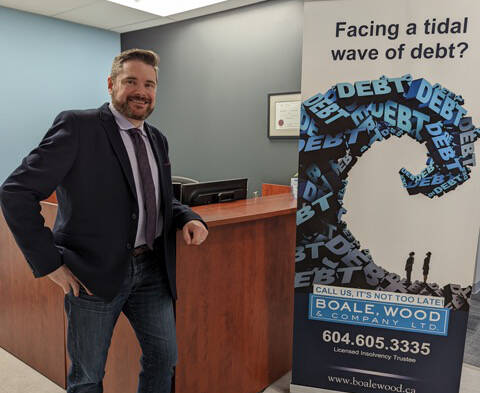The majority of Canadians have credit cards or other types of debts and with the increasing cost of inflation it’s making harder for regular Canadians to pay down their debts.
Many people do not enjoy receiving credit card statements or have an idea of how long it will take to pay off the balance. Opening a credit card statement can bring on anxiety for some people. When you read your credit card statement, you should know it must include:
- Your outstanding balance
- An estimate of the length of time it would take to pay of the balance in full if you paid only the minimum amount required each month
- A description of each transaction made during the period covered in the statement
- The date each transaction was posted to your account
- The amount credited or charged during the month for each of the following:
- Purchases made
- Cash advances received
- Payments made
- Interest charged
- Non-interest fees charged
With this basic information, you can create a plan for dealing with your debts. The information you need to know is:
- What is the interest rate charged on each debt
- How long will it take you to pay off your debt based on the minimum payments
- What can you afford to pay towards the debt?
What is the interest rate charged on each debt
Your credit card statement is required to disclose the amount of interest being charged for purchases and cash advances. The interest rate is presented on an annual basis however most credit card companies charge interest daily. When interest is calculated daily, you are charged interest on interest when you carry a balance on your credit card.
When you know the interest rate being charged, the next step is to review all of your debts and find the debt with the highest interest rate. Paying off the highest interest rate debt is the best way to reduce the amount of interest you pay over the long term.
How long will it take you to pay off your debt
It’s important for your credit rating to pay the minimum payment on your credit card, however this is not the way to get out of debt. When paying the minimum payment you keep your debts in good standing, however most of the minimum payment is going towards paying interest. The balance will take years to pay off.
If you owe $2,000 on your credit card and the interest rate is 18 per cent and you make the minimum payment of $60 per month (typically 3 per cent of the balance) it would take 13 years and 10 months to pay off the balance and you would pay $1,799 in interest. Your total payments would be $3,799.
If you owe $2,000 on your credit card and the interest rate is 18 per cent and you make monthly payments of $160 per month, it will take you 1 year and 6 months to pay off the balance and you would pay $264 in interest for a total of $2,264.
This is a huge difference in how long it would take to pay off your credit card, just by paying $100 more. These examples demonstrate why it’s important to pay more than the minimum balance on your credit card, but also does not consider the reality – many people still use their credit cards even after making the payment. This leads to the balance not going down and ending up in a cycle of making room on the credit card and then using the credit card for other purchases. This reality is why it can be difficult to get out of debt.
What can you afford to pay towards the debt?
To get out of debt there are really two steps which can help your goal: reduce your spending and know how much you can pay toward your debts. If you earn $3,000 a month, you should not be paying $3,000 or even 50 per cent of your income towards your credit card. You need this income to pay other expenses and necessities in life, like rent, groceries, transportation, etc. You need to set an amount you can afford to pay to your debts, and then use the remaining funds to pay your living expenses without using your credit card.

Budgeting the 50/30/20 way
Having a budget is a good way to control and understand how much you can afford to pay towards your debts. One method of budgeting is the 50/30/20 rule. This rule states 50 per cent of your income is used for your needs (rent, groceries, transportation and other necessities to earn income), 30 per cent for your wants, and 20 per cent for your financial goals which include savings, retirement plans, financial goals and debt repayment. If you’re earning $3,000 per month then $600 ($600 = $3,000 x 20 per cent) should be allocated towards savings, retirement, financial goals and repayment of debt. Therefore, the amount you would allocate to paying your debts should be $600 per month or less.
Once you’ve set the amount for your debt payments, you need to review how much your debts require in payments each month, and which one has the highest interest rate. You then start to tackle the debt with the highest interest rate and when this debt is paid off, move to the next highest interest rate debt and so on. This will work if you do not use the credit cards after your payments and your total debt payments required are less than 20 per cent of your income.
Paying your debt off in 60 months
Another way to look at your financial situation is to take your debts and divide it by 60. This calculation shows what your monthly payment needs to be to pay off your debts in 60 months without interest. If you compare the monthly payment over 60 months to 20 per cent of your financial goals amount above, you will see if can afford the monthly payment and if you will be able to pay off your debts in 60 months.
If you can break the cycle of using your credit card after your payment, you’ll make progress in paying off your debts. What I see is a lot of people are unable to break the cycle of using credit cards and continue to use their cards and make slow progress in paying off the balance.
If you’re unable to break the cycle of using your credit cards or your monthly debt payments are more than 20 per cent of your take-home pay, or you feel stress over your financial situation, talking to a Licensed Insolvency Trustee at Boale, Wood & Company Ltd. can help you review your financial situation and give you free legal options in dealing with your debts and helping you move towards being debt free.
You can speak with a Trustee at Boale, Wood & Company Ltd. at
